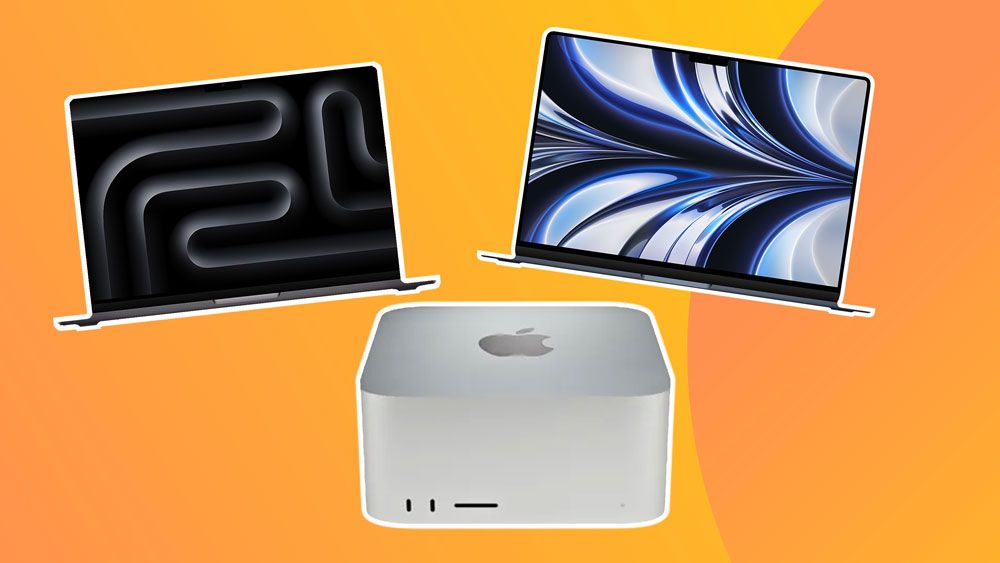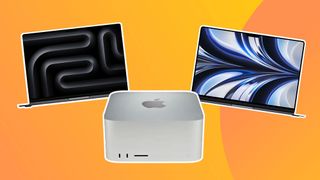
Jump to the quick list↴
1. Best for most
2. Best budget
3. Best overall
4. Best desktop
5. Best portable
6. Budget portable
7. Best all-in-one
8. Other options
FAQs
Apple has a wide range of machines ideal for video editing, with the M3 Max chipped version often front of mind for its sheer power combined with portability. However, its ray tracing and 3D capabilities are likely beyond your requirements in the world of video editing so our top choice is actually an M2-powered model, which will be more than adequate for most users.
When selecting a Mac for video editing, you can choose between desktop Macs and MacBooks due to their versatility, the availability of software for the task and powerful M2 or M3 processors.
We’ve tested every single pick on this list, and benchmarked them for specific video-editing workflows, evaluating the range to find the top picks for each type of user. With MacBooks, we’ve included 16-inch versions as standard as we having more screen real estate is always better for video editing tasks, but you can always go for the smaller versions.
Performing our own tests on video download and upload speeds and rendering is only part of the process, as we’ve also taken on feedback from our contributors on how it is living and working with each machine to gauge their strengths and weaknesses (to learn more, read how we test laptops, PCs and workstations).
Also check out our pick of the best laptops for video editing, which includes some Windows alternatives. Meanwhile, whichever laptop you end up picking, you’ll want to use the best video editing software that best fits your requirements.
Erlingur writes and edits reviews for an endless stream of laptops. He knows power, performance, display and battery life (the key components for a good video editing laptop). So he is perfectly placed to handpick machines for this list, and advise on who they’re best suited to.
Quick list
Here’s an overview of the best Mac for video editing so you can get a quick heatmap of which model and form factor is best for you.
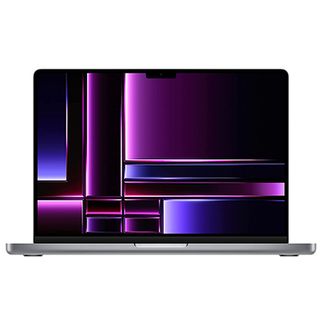 Best for most
Best for most
While it doesn’t have the chops of the M3, the M2 Pro is incredibly powerful, and we think it’s enough for most video editors – especially when you factor in the price (there will often be price cuts).
Read more below
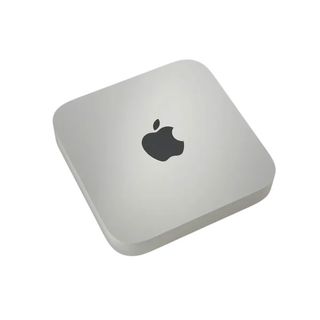 Best budget
Best budget
The Mac Mini Pro combines power and affordability, and it’s a fraction of the price of the MacBook Pro. Or, if you can do without the full power of a Pro chip, the basic M2 mini equals the MacBook Air, and is the cheapest of Apple’s offerings.
Read more below
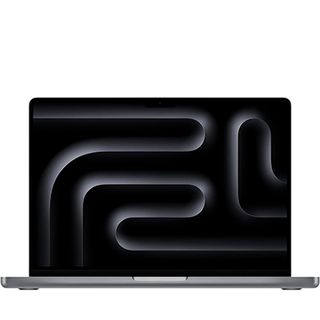 Best overall
Best overall
We tested the MacBook Pro M3 Max using heavy duty software and loved how smooth it was when video editing. It’s so powerful, it’s a viable alternative to a desktop, so if you’re looking for raw power then this is the top pick.
Read more below
 Best desktop
Best desktop
Apple’s compact desktop computer is one of the most powerful machines available, offering a fantastic alternative to Apple’s beefy, larger Mac Pro with all the power you need for video editing. It’s available in both M2 Max and M2 Ultra configurations.
Read more below
 Best portable
Best portable
The newest Apple release brings some extra power to the Air range. With enough oomph for mid-to-light-heavyweight video editing work, you won’t want this if you’re a studio-quality editor but it is the most portable of all the MacBooks.
Read more below
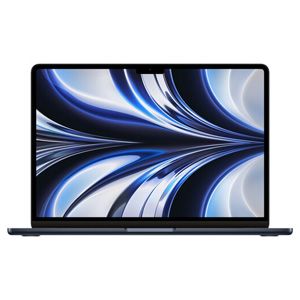 Budget portable
Budget portable
If price and portability are equally important to you, the MacBook Air M2 does good job at editing video, though it isn’t for power users, who will want to consider the 14-inch MacBook Pro. If you’re a content creator for social media, this is the one.
Read more below
Best Mac for video editing for most people
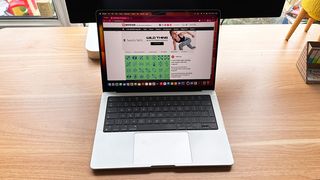
Specifications
Reasons to buy
Reasons to avoid
We road-tested the 16-inch MacBook Pro (2023) with an M2 Pro chip, 32GB RAM and 2TB SSD, and its performance was lightning fast. We benchmarked with DaVinci Resolve, exporting an effects-laden video in record time, and transcoding an hour of 4K video in Handbrake equally quickly.
The truth is, this machine should be powerful enough for most video editors, and though it was beaten out by the M3 Max in all our tests, you will likely be more than satisfied with the performance of the M2 Pro – especially now that its price has come down.
You get a decent range of ports for a MacBook, too – one HDMI, three Thunderbolt 4, an SDXC card slot, an audio jack and one MagSafe 3. The display has top-notch colour accuracy, equalling the M3 model in its ability to deliver up to 1,000 nits of sustained, full-screen brightness, and 1,600 nits of peak brightness (the average is 500). Finally, we found the battery was also brilliant – praising its true all-day life of 22 hours.
For more details, read our Apple MacBook Pro 16-inch (M2, 2023) review, or if you’d like the smaller version see the Apple MacBook 14-inch (M2, 2023) review instead.
FYI: You could also go for the 13-inch MacBook Pro if you wanted something uber-portable, but we think that for the power you get the new M2 MacBook Air could be a better option – it has the same chip.
Best budget Mac for video editing

Specifications
Reasons to buy
Reasons to avoid
The 2023 Mac mini is a brilliant, compact, budget Mac for video editing. Just pair it with one of the best monitors for video editing for a complete setup. In fact we were so impressed with the M2 Pro version that we couldn’t find anything it can’t handle. Of course, the Pro is more expensive so the true budget option is the standard M2 chip, which is equal to the MacBook Air M2 (our portable laptop pick in this guide). But the Mini Pro will still be miles cheaper than the MacBook Pro – so if you need power and affordability this is a great pick.
Packing an astonishing amount of power at a brilliant price, we think the new Mac mini (M2 Pro, 2023) is one of the best compact desktops money can buy. Sure, it isn’t as powerful as the Studio, but our testing showed it can run several highly demanding apps, including Cinema 4D, After Effects, 3DS Max, Premiere Pro etc, simultaneously with ease.
With Apple throwing its M2 and M2 Pro chip into the mix, the 2023 model took performance to a whole new level. The Mac mini (basic, not Pro) is a great alternative to the iMac (as you can attach your choice of external monitor).
See our full Apple Mac mini (M2 Pro, 2023) review for more details.
Best Mac for video editing overall
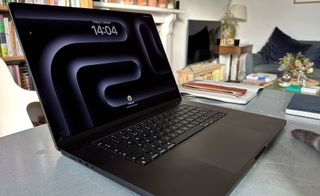
Specifications
Reasons to buy
Reasons to avoid
Apple’s newest MacBook Pro is a powerhouse for video editing at high level. Our benchmark tests found it could be a replacement for a desktop machine – timelines are responsive even when working in 8K or multicam, and it showed no sign of lag when multi tasking.
We appreciated the gorgeous display (1,600 nits of peak brightness – the average is 500 nits), which has deep blacks and bright whites, meaning your videos will be super-accurate. And while we tested the 16-inch version, arguably the best suited for most creative work, you could choose the 14-inch model for portability and power.
Because of its power and glorious display, we had to select it as the best overall Mac for video editing work – but bear in mind you might not need that whack of power. With its emphasis on calculating and rendering 3D scenes, the M3 Max offers benefits to those making animations and 3D effects. If these areas are outside your remit then a MacBook M2 Pro (above) will be all you need, meeting your requirements and saving you money.
But what of the battery? We were pleasantly surprised at managing to get 10 hours of intense Cinema 4D work out of the MacBook Pro before the battery ran out.
Finally, a major positive is the inclusion of a variety of ports with a handy HDMI port among them. Read more in our Apple MacBook Pro 16-inch M3 review.
Best desktop Mac for video editing

Specifications
Reasons to buy
Reasons to avoid
If you want a desktop Mac with a hefty whack of power, we recommend the Mac Studio M2 Ultra. In fact, we gave it a rare five-star review after testing it for video editing.
Besides its incredible power, the benefit of this mighty machine is you can cart it around with you if you know you’ll be showcasing your work on screens at studios, for example. And you can hook it up to a high-level monitor of your own, too (it supports up to eight 4K displays, six 6K displays or three 8K displays running at 60Hz).
We agree with Apple’s claim it is the most powerful desktop unit ever released, with its blisteringly fast M2 Ultra chip. Our tests had Photoshop and Lightroom open at the same time, as well as having multiple browsers open and watching YouTube videos without a single stutter or lag.
As you can probably tell, this is a professional-level option, and it has the price tag to match. But it should last a long time. Read more in our Mac Studio M2 Ultra review.
Best portable Mac for video editing
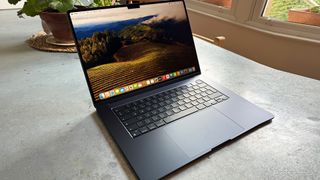
05. MacBook Air (M3 2024)
Specifications
Reasons to buy
Reasons to avoid
We’ve already got hands-on with the new MacBook Air M3 and our opinion is that on the whole it’s a worthwhile upgrade above the previous iteration (if you’d like a cheaper lightweight option, we’ve included the M2 version below this one in our buying guide, which is still a good option if you’re not in need of the amped up power). The M3 Air positions itself as the perfect laptop for AI, which means it’s got some serious power inside it, making it a pretty good choice for video editing.
Truthfully, it will handle most of the video editing tasks you throw at it, as long as you’re not a heavy, studio-quality professional-level video editor. We’re currently undertaking our full professional review, and will be back here with some benchmarks shortly. But early indications are that if you want something super-portable, faster than the previous Air but not as heavy duty as an M3 Pro, this one is for you.
See our hands-on MacBook Air M3 first impressions here.
Best budget portable Mac for video editing

Specifications
Reasons to buy
Reasons to avoid
If portability is your number one concern, or you’re on a tighter budget and don’t need the most powerful model, the MacBook Air isn’t a bad option at all for video editing, especially for enthusiasts and social media content creators. The 2022 model gets a boost in performance thanks to Apple’s own M2 chip. Performance isn’t as impressive as MacBook Pros packing the M2 Pro or Max, but it does outperform the 2020 M1 MacBook Air.
In fact, our reviewer found performance to be very much on par with the slightly more expensive 2022 MacBook Pro 13-inch when running the same configuration of the M2, according to benchmark scores in Cinebench R23 – although it can heat up more quickly as it lacks a fan. We also found that the M2 Neural Engine did a great job of handling basic video editing.
The new laptop also has a slightly larger 13.6-inch screen (compared to the MacBook Air M1 Model’s 13.3-inch display), with resolution increased to 2,560 x 1,664. The screen’s brighter too at 500 nits, and it now supports the P3 colour gamut like the MacBook Pros, with support for one billion colours. As for battery life, we looped a 1080p video for 16 hours – five hours longer than on the previous MacBook Air. If you wanted a larger screen, of course, you could go for the 15-inch iteration – see the MacBook Air 15-inch (M2 2023) review here.
All in all, if you’re doing light video editing on the move, or you’re not a pro who needs sustained performance for all-day sessions of heavy editing, this is a nice balance between performance and price.
See our full MacBook Air (M2, 2022) review for more details.
Best all-in-one Mac for video editing

07. iMac (24-inch, 2023)
Specifications
Reasons to buy
Reasons to avoid
If you want a desktop Mac, don’t need the most powerful machine on the market and prefer to avoid having to fork out for a separate screen, then the latest iMac iteration could be for you. With its M3 chip, the iMac is ideal for video editing, and more.
The 2023 MacBook Pros are more powerful than the iMac, so the main benefit is the screen space it offers, which many people will find more comfortable to work on than a laptop. It’s also more affordable than the MacBooks.
As far as desktop computers go, we think this is an excellent device to edit videos on – the new M3 chip brings proper power even if it isn’t the Pro version (though the screen is certainly pro). Its all-in-one design means the computer is built into the screen, so there are no awkward wires or cables to plug in. Just hook it up to a power source, connect the wireless keyboard and mouse, and away you go. Memory (8GB unified) may prove challenging for high-end task, but the iMac does ofer a fantastic pro-level screen and enough power for mid-level creative work.
While we haven’t yet reviewed this model, we loved the previous iteration, which could also be an option if you want to save even more money. Read about that in our Apple iMac M1 review.
Also tested
MacBook Pro M1 Max 2021: An affordable whack of power
Sure, it isn’t new. In fact it’s two iterations old. But the MacBook Pro M1 Max 2021 offers more than enough power to handle most video editing tasks with ease, and you’ll get a great price on it nowadays. The 16-inch screen is glorious, too. Apple doesn’t make it anymore, so you’ll need to sniff one out from a third-party retailer.
Creative Bloq score: 5/5
See our MacBook Pro 16-inch M1 review here
How to choose the best Macs for video editing
When choosing the best Mac for your video editing work, there are a number of things to consider – from how powerful the processor is through to its memory and display size and quality. All of these considerations are factored into our tests in order to help you select the best one for your projects:
Processor: Look for a Mac with a powerful processor, preferably something from Apple’s M2 or M3 chip ranges, which come in Pro and Max iterations. A more powerful processor will handle video-editing tasks faster and more efficiently. M1 chips are also more than powerful enough and getting cheaper with more frequent discounts. If you’re working on a tighter budget, look for an M1-based machine from a third party seller.
Graphics card: These days, Macs don’t come with discrete graphics cards. Instead, the graphics processor is built right into the chip itself. Look out for graphics core counts when shopping around: the M2 Ultra comes with 60 graphics cores, which will result in much better performance than the eight cores on the vanilla M2.
RAM: Apple silicon chips use what the company calls a ‘unified memory architecture, which means the CPU and GPU can share a common memory pool. In layman’s terms, this means 8GB of unified memory should perform better than 8GB of regular memory. Still, it’s a good idea to choose a Mac with at least 16GB of RAM, as video editing software can be memory-intensive. If you’re planning to work on more complex video projects or 4K footage, consider getting a Mac with 32GB or 64GB of RAM.
Storage: Video editing requires a lot of storage, so look for a Mac with a large SSD. Consider getting a Mac with at least 512GB of storage, or even 1TB or more if you plan to work on larger projects.
Display: A high-quality display is essential for video editing. Look for a Mac with a Retina display that offers high resolution and colour accuracy. If you’re getting a Mac without a display, such as a Mac mini, you’ll need to buy a monitor as well. Thankfully, our guide to the best monitors for video editing will help you find one that’s ideal for your needs.
Software: Consider the video editing software you plan to use and ensure it is compatible with the Mac you choose.
Budget: Macs can be expensive, so take your budget into account and choose a Mac that offers the best balance of performance and features within your means. A MacBook Pro might have more power, but maybe a MacBook Air will do everything you need. Consult our MacBook Pro vs MacBook Air guide to find out all the differences between the two models.
How we test the best Mac for video editing
We rate the best Macs for video editing by testing the machines with the leading software for this task, benchmarking on speed and capability. Each laptop or desktop is put through the same benchmark tests when reviewing them – and add extra tasks for candidates for video editing. See below for more detail on how we benchmark and rate the hardware, or find out more on our how we test laptops, PCs and workstations page.
- GPU: We use 3DMark’s benchmark test, which tries out the graphics processor through 3D modelling and video game physics tests.
- CPU: Geekbench 5 measures the system’s multi-core and single-core thoroughput, and Maxon’s Cinebench R20 determines the hyperthreading capabilities. We run each of these three times.
- Battery: We use the PCMark 10 battery life test, and perform ‘in use’ tests like continuous video playback or tasks like video editing.
- For video editing: We test the smoothness and speed of video editing using applications like Da Vinci Resolve and Adobe After Effects, editing with multiple streams whilst using the browser tabs and even playing YouTube videos.
We appreciate that not all video editors are working with heavy duty, studio-quality footage. Many content creators – for social media, for example – won’t need the highest specs or newest model, which is why we’ve included older Macs and the MacBook Air as well.
As with all of our buying guides, we consider the affordability and availability, covering a range of price points. Next, we look at the performance and components, weighing up the processors and graphics card power alongside the RAM and storage.
Lastly, we consider practical and design elements; how light is it and how easy would it be to stow away for editing-on-the go? Is it an eyesore (unheard of in Apple-land), does it have any further assistive features?
If you’re also looking for a MacBook for other purposes, see our guide to the best MacBook for programming.
FAQs
Why should I use a Mac or MacBook for video editing?
There are several reasons why Macs and MacBooks remain a popular choice for video editing:
Performance: Macs are known for their powerful hardware and software optimisation, which makes them capable of handling complex video editing tasks with ease. Macs come equipped with powerful processors, graphics cards, and high-speed storage, allowing faster rendering and export times.
Software: Macs come pre-installed with iMovie, a powerful video editing app that will do the job for most basic video editing tasks. Additionally, professional video editing apps such as Final Cut Pro and Adobe Premiere Pro are also available for Macs, and these are some of the most popular pieces of software in the category.
Stability: Macs are known for their stability and reliability, meaning they are less prone to crashes and other software-related issues that can interrupt your workflow.
Colour accuracy: Macs are also known for their high-quality displays, which offer accurate and consistent colour reproduction. This is particularly important for video editors who need to ensure their video footage looks the same across different devices and platforms, for example to meet a client’s brand guidelines.
Integration: If you are already invested in the Apple ecosystem, using a Mac or MacBook for video editing will integrate seamlessly with other Apple devices such as the iPhone, iPad and Apple Watch. Macs also integrate well with other Apple services and features such as iCloud and AirDrop, making it easy to share and transfer files between devices.
Are Macs better than PCs for video editing?
Both Macs and PCs can be used for video editing, and each has its own advantages and disadvantages.
Macs are known for their excellent performance, stability and software optimisation, making them a popular choice among professional video editors. Macs and MacBooks come equipped with powerful processors, high-speed storage and dedicated graphics cards that are optimised for video editing software such as Final Cut Pro and Adobe Premiere Pro. Macs also have a reputation for colour accuracy and high-quality displays, which is important for professional video editing.
On the other hand, PCs offer a wider range of hardware options and can be more affordable than Macs, especially when it comes to building a custom system. Additionally, professional video-editing apps such as Adobe Premiere Pro and DaVinci Resolve are available on Mac and PC, so you can choose the best platform for you.
Ultimately, whether a Mac or PC is better for video editing depends on your personal preferences, budget and specific video-editing needs. Both platforms have their strengths and weaknesses, and the choice ultimately comes down to your individual requirements and preferences.
